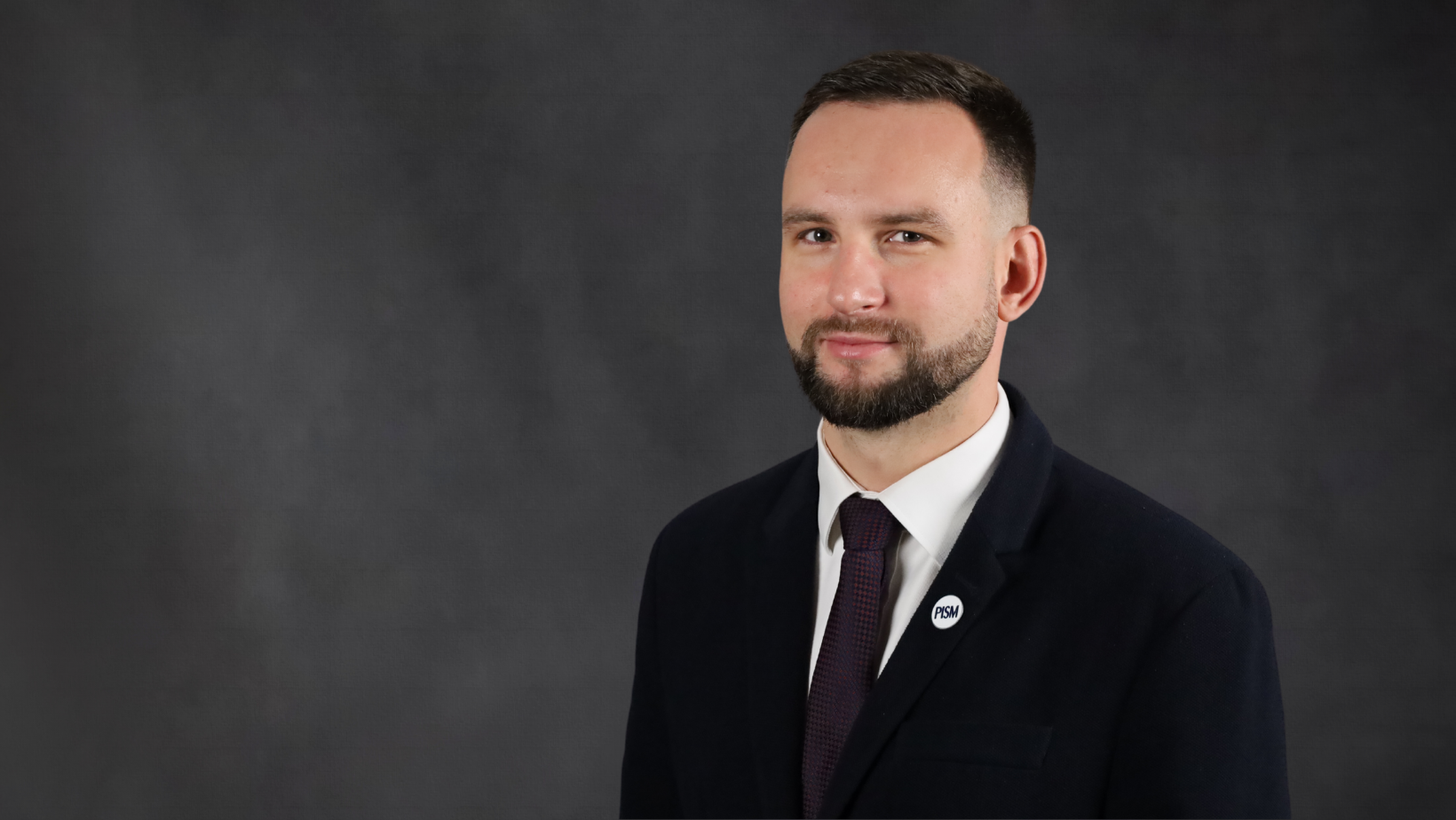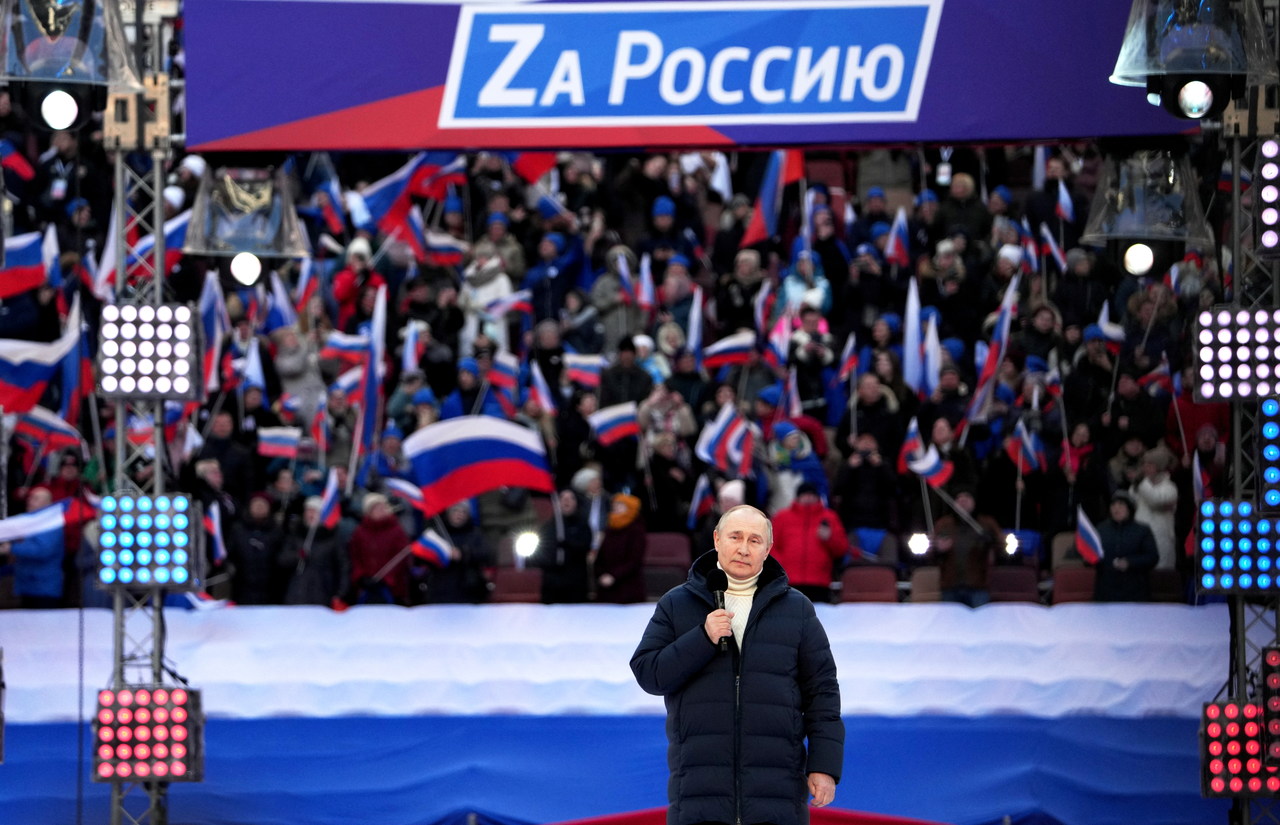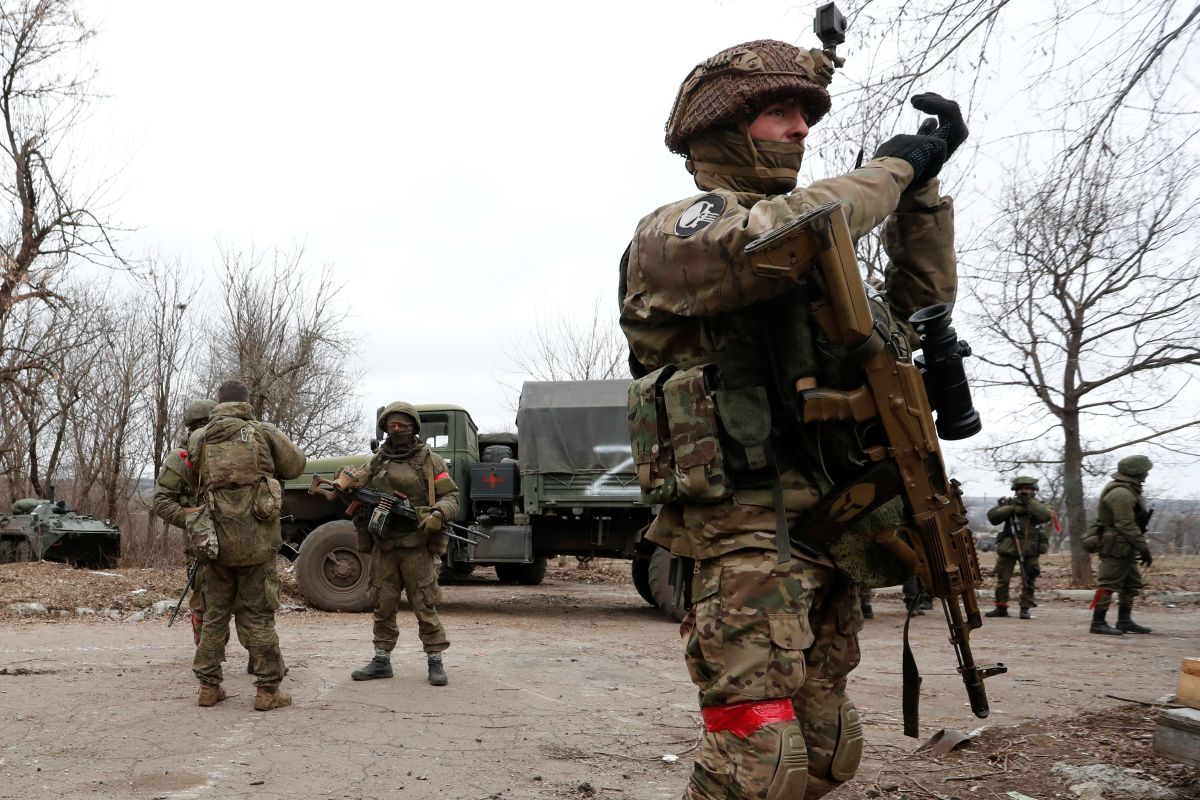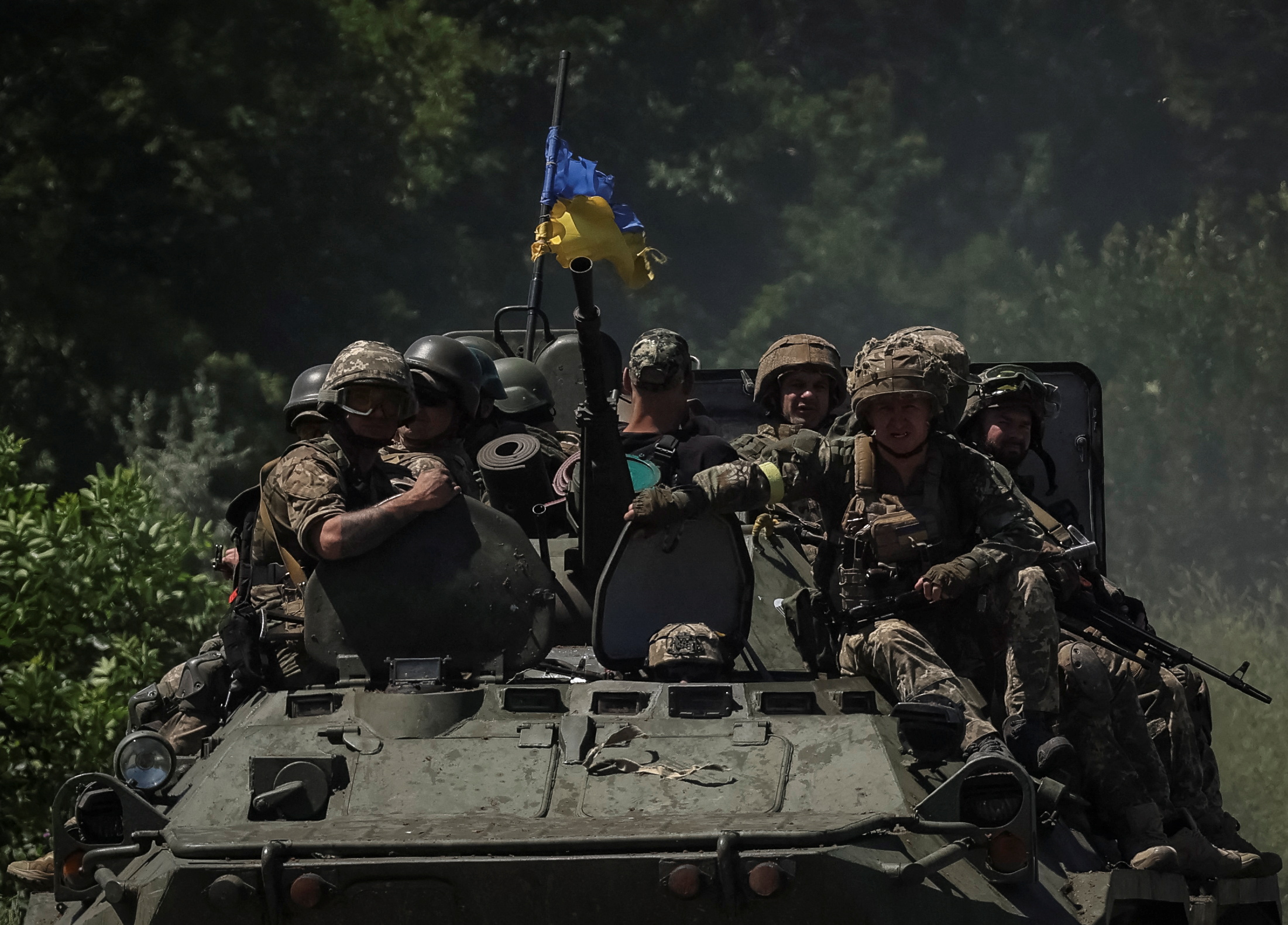Russia Recruiting Volunteers to Fight in Ukraine
Since the beginning of the invasion of Ukraine, Russia has refrained from declaring a general mobilisation. It is trying to make up for the high losses of soldiers by, among other things, organising regional recruitment campaigns for volunteers. By the end of August this year, the authorities of the federation’s various entities are expected to have prepared around 34,000 new recruits for the fighting in Ukraine. In all likelihood, Russia will not be able to fully achieve this goal, and the formed battalions will not have significant combat value due to their poor level of training. Thus, they will probably suffer heavy losses, but the increasing number of casualties will not translate into a change in Russian tactics in Ukraine.
 ALEXEY MALGAVKO/ Reuters/ FORUM
ALEXEY MALGAVKO/ Reuters/ FORUM
A total of more than 300,000 Russian soldiers have participated in the invasion of Ukraine since 24 February. According to Western intelligence services, about 15,000–25,000 of them (an average of about 100 per day) have been killed and another 45,000–60,000 wounded during the six months of fighting on the frontline. The Ukrainian side claims that the number of dead and wounded is over 43,000 (including about 900 officers and 10 generals). In either case, it means that Russia has lost more soldiers than during the more than nine years of the Soviet intervention in Afghanistan (15,000). The high personnel losses have significantly weakened Russian combat capabilities, slowed the pace of the invasion and forced (perhaps only temporarily) the restriction of its objectives to the eastern and southern fronts. So far, Russia has tried to make up for personnel shortages by, among other things, recruiting mercenaries and forcibly conscripting the local population into “people’s militias” (including DNR/LNR separatist forces). Currently, recruitment campaigns are conducted in prisons and individual regions of the federation through military recruitment points, the Wagner Group and veterans’ associations, among others. By shifting the responsibility for the formation of volunteer battalions to the authorities in the regions, the Kremlin is trying to mobilise support there ahead of regional elections scheduled for 11 September this year.
Volunteer Recruitment in Russia’s Regions
In July, the Russian government announced the formation of 85 new volunteer battalions (one in each federal entity) consisting of around 400 soldiers each (34,000 in total). Regional recruitment campaigns are currently underway in more than 30 federal entities, where a total of 40 units are being formed. Some declare their readiness to form more than one battalion but are having difficulty attracting recruits. According to information from the Ukrainian Military Intelligence Service (GUR), by mid-July this year. Russia had succeeded in completing only eight of the 16 battalions that were to co-form the nascent 3rd Army Corps with a base in Mulino (Nizhny Novgorod Oblast). Within its structures, the 72nd Separate Motorised Rifle Brigade, consisting partly of volunteers and professional soldiers, was also to be formed. The 3rd Corps was to be subordinated to the Western Military District (WMD) and transferred in its entirety to Ukraine. The organisational affiliation of the other battalions is currently not publicly known.
Volunteers from poorer regions are expected to be attracted by high monthly salaries ($2,000–5,700 per month), an enlistment allowance ($3,200–5,000), or combat operations bonus ($30–130 per day). Payment of additional funds is often contingent on completion of training or completion of the first three months of a minimum six-month contract. Deaths of volunteers are to be compensated by the payment of $82,000 to their families. The personnel costs alone for the operation of the announced 85 battalions will therefore cost Russia more than $100 million per month (about $1.2m per battalion). According to available data, these are to be financed from the budgets of federal entities, but the transfer of additional funds from the defence ministry’s budget for this purpose cannot be ruled out. The Russian authorities also offer intangible benefits to recruits who are, for example, prisoners in penal colonies (e.g., in Adygea, Rostov, St. Petersburg, and Nizhny Novgorod), who can count on amnesty after six months of service at the front, regardless of the nature of the crime for which they were convicted. Immigrants from the former Soviet republics (especially Central Asia) are recruited, among others, into Moscow’s “Sobyanin’s Regiment” and are encouraged by the prospect of quickly obtaining Russian citizenship.
Volunteer Battalion Capabilities
The battalions being formed are mostly combat in nature, and include armoured and motorised troops, artillery, air defence, naval infantry, and a marksman’s company. Others are to support the Russian army’s operations in communications, logistics, engineering, and medical support. Some part of the battalions is most likely to be prepared mainly for securing Russian-occupied areas, enabling the movement of some operational troops to key points on the frontline. Indeed, the volunteer units being formed will mostly be of low combat value due to their lack of training and will be insufficiently integrated with operational troops. Volunteers are not required to have military experience and the requirements for non-commissioned officer candidates (e.g., regarding education) have been lowered. Recruits are sent to a 30-day training course at the Orenburg and Nizhnovgorod training grounds. This time is only enough for them to master basic military skills. However, the units being formed will not have enough time to practice interaction with operational troops, which will translate into their limited combat value and high losses.
Some formations (e.g., the “Bashkir” motorised rifle battalion) are formed on the initiative of associations of veterans of the naval infantry, airborne troops, and special forces (Spetsnaz). Units requiring specialised skills are directed to training centres, such as the “Vologda” artillery battalion, which is being prepared at the artillery training centre in Luga (Leningrad Oblast) and is part of 9th Guards Artillery Brigade Kielce-Berlin. The “Tigr” battalion is training in Primorsky Krai on the training grounds of the 155th Naval Infantry Brigade based in Vladivostok, with which it is eventually to be integrated. Accelerated tactical courses for volunteers from the North Caucasus are also being organised by the Spetsnaz University in Gudermes (Chechnya). Criminals recruited by the Wagner Group are most likely to undergo training at the GRU’s 10th Spetsnaz Brigade training ground in Molkino (Krasnodar Krai).
Public Reaction
The Russian reservist mobilisation potential is estimated at 2 million people. However, since the beginning of the invasion, the Russian government has not announced a general military mobilisation for propaganda and social reasons. To minimise the risk of anti-war protests, Russia maintains that the war in Ukraine is only a peacetime “special military operation”, which in polls is supported by 69% of Russians. However, the forced call-up of reservists could contribute to the emergence of popular resistance, which is currently only present in some regions of Russia. In Buryatia, Tuva, and Bashkiria, there are anti-war movements (e.g., the “Free Buryatia” foundation, the “New Tuva”, the “Akbuzat” movement). They call for the termination of contracts with the army and provide recruits with legal assistance in this regard. They have popular support because soldiers from non-Slavic ethnic groups are treated as “cannon fodder”. According to Bellingcat estimates, the largest proportion of casualties on the Russian side (per 100,000 people) are from Buryatia, Tuva, and North Ossetia. The increasing number of ethnic casualties could lead to protests, which will challenge the regional authorities. However, anti-war sentiment will be dampened by the impact of Russian propaganda and war censorship and even repression.
Conclusions
The recruitment of volunteers is intended to strengthen Russia’s operational capabilities in Ukraine and, in particular, to contribute to the capture of the whole of Donetsk Oblast before the autumn regional elections. The redeployment of additional troops will help replenish losses and is intended to facilitate the seizure of the entire Donbas. It will also allow the redeployment of some troops to the south to halt the Ukrainian counter-offensive. Despite the short trainings for volunteers, Russia will not be able to form 85 battalions by the end of August this year. Due to the low combat value of these volunteer battalions, their participation in the fighting will have limited impact on the outcome of the conflict in the long term. However, their presence may contribute to its brutalisation, such as an increase in war crimes committed especially by prison recruits.
Russia will continue to try to maintain that hostilities in Ukraine are merely a peacetime “special military operation”. However, it cannot be ruled out that, in the event of an effective Ukrainian counter-offensive, the Russian authorities will ultimately decide to announce a general mobilisation, preceding this with an intensive disinformation-propaganda campaign. Such a decision, however, would be an image defeat for Russia.





